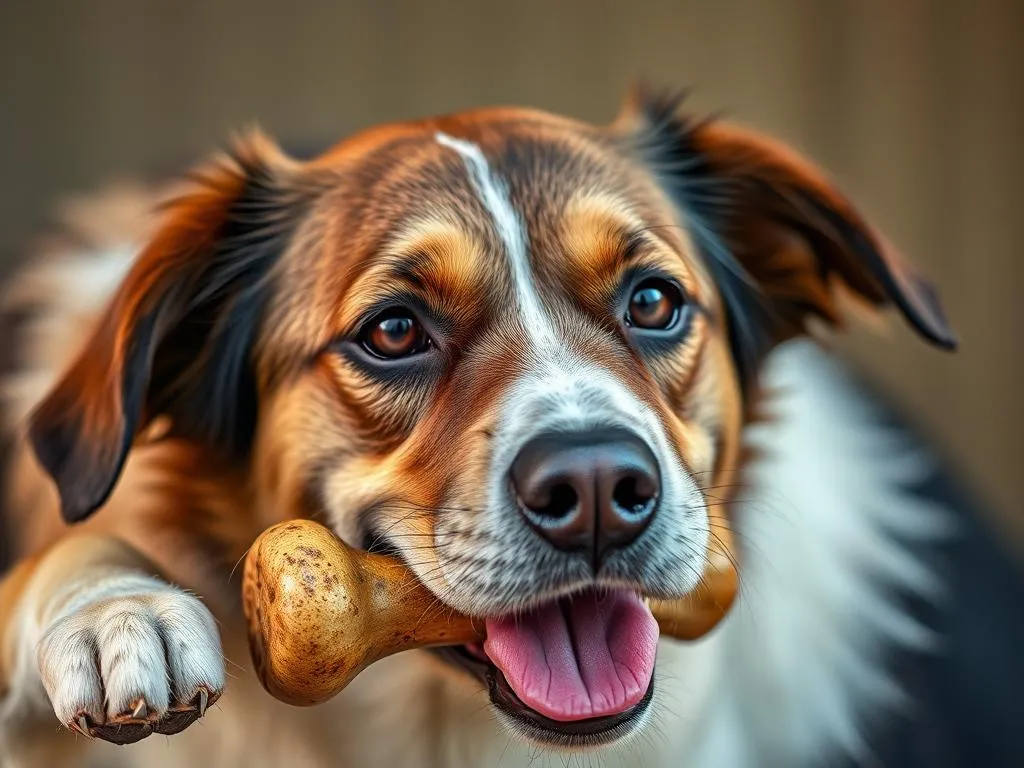
Dog nutrition is a fundamental aspect of pet care that directly influences the health and well-being of our furry friends. One topic that often generates much debate among dog owners is the question of whether dogs can eat bones. While bones can be a natural part of a dog’s diet, there are important considerations to keep in mind regarding their safety, nutritional value, and the potential risks involved.
Understanding Dog Nutrition
The Importance of a Balanced Diet
A balanced diet is crucial for maintaining a dog’s overall health. It should include a variety of nutrients that cater to their specific needs. The primary components of a balanced diet for dogs include:
- Proteins: Essential for growth, maintenance, and repair of tissues.
- Fats: Provide energy and help absorb certain vitamins.
- Carbohydrates: Supply energy and aid in digestion.
- Vitamins and Minerals: Support various bodily functions, from immune health to bone strength.
Common Nutritional Needs by Dog Size and Breed
Nutritional requirements can vary significantly based on a dog’s size and breed. Here’s a breakdown:
- Small Breeds: Generally require higher energy food due to their fast metabolism.
- Medium Breeds: Have moderate energy needs and can often handle a wider variety of foods.
- Large Breeds: Need balanced diets to prevent obesity and joint issues, often with lower fat content.
Additionally, special considerations are necessary for different life stages:
- Puppies: Need nutrient-dense foods to support growth.
- Adult Dogs: Require maintenance diets that keep them healthy and active.
- Senior Dogs: May benefit from diets lower in calories and higher in fiber to aid digestion.
Types of Bones Safe for Dogs
Raw Bones vs. Cooked Bones
When it comes to bones, understanding the difference between raw and cooked is critical.
-
Raw Bones: Often considered safe for dogs, raw bones can provide essential nutrients and promote dental health. They are less likely to splinter and pose a choking hazard.
-
Cooked Bones: These bones are dangerous for dogs as they can splinter easily, leading to choking or serious internal injuries. It’s recommended to avoid feeding any cooked bones to dogs.
Different Types of Bones
There are several types of bones that are generally safe for dogs, including:
- Marrow Bones: Rich in nutrients and fat, these can keep dogs busy and satisfied.
- Knuckle Bones: Thick and sturdy, good for larger breeds.
- Rib Bones: Should be raw and larger for safety.
- Recreational Bones: Typically large bones meant for chewing rather than consumption.
Bone Size and Dog Size Considerations
Selecting the right bone based on your dog’s size is crucial.
- Small Dogs: Should have smaller bones to prevent choking.
- Large Dogs: Require bigger, sturdier bones to avoid breaking them and causing harm.
Benefits of Feeding Bones to Dogs
Dental Health
Chewing on bones can greatly benefit a dog’s dental health. The act of chewing helps reduce tartar and plaque buildup, which can lead to healthier gums and teeth. Regular chewing can even promote fresher breath.
Nutritional Value
Raw bones contain a wealth of nutrients. They are rich in calcium and phosphorus, which are essential for strong bones and teeth. Additionally, the marrow found in some bones can provide an energy boost and support joint health due to its nutrient density.
Mental Stimulation and Behavioral Benefits
Chewing is a natural behavior for dogs. Providing bones can alleviate boredom and anxiety, giving dogs a productive outlet for their energy. The act of chewing can also be quite soothing, helping to keep dogs calm and entertained.
Risks and Considerations
Potential Health Risks
While there are benefits to feeding bones to dogs, there are also considerable risks:
- Choking Hazards: Bones can become lodged in a dog’s throat.
- Tooth Fractures: Chewing hard bones can lead to broken teeth.
- Digestive Issues: Bones can cause constipation or intestinal obstruction if not digested properly.
Allergies and Sensitivities
Some dogs might have allergies or sensitivities to specific types of bones. Watch for signs such as vomiting, diarrhea, or unusual behavior after introducing bones into your dog’s diet.
Recommendations from Veterinarians
It is always wise to consult with a veterinarian before introducing bones to your dog’s diet. Vets can provide tailored advice based on your dog’s health, size, and dietary needs.
How to Safely Introduce Bones to Your Dog’s Diet
Choosing the Right Bone
When selecting bones, consider the following tips:
- Choose high-quality bones from reputable sources, such as butchers or specialized pet stores.
- Avoid bones that are too small or have been treated with preservatives or additives.
Monitoring Your Dog
Always supervise your dog while they are chewing on bones. Look for signs of distress, such as choking or excessive drooling, and be prepared to intervene if necessary.
Recommended Serving Frequency
Feeding bones should be done in moderation. Depending on your dog’s size and health, you may offer bones once or twice a week. Make sure to balance bone consumption with other dietary needs to maintain a well-rounded diet.
Alternatives to Bones
Chew Toys
If you’re hesitant about feeding your dog bones, consider high-quality chew toys as an alternative. Many brands offer durable toys designed to mimic the benefits of bones without the risks. Look for toys made from safe, non-toxic materials that can withstand vigorous chewing.
Dental Treats
Dental treats can also serve as a safe alternative to bones. These treats are formulated to promote dental hygiene while providing nutritional benefits. Choose products that are approved by veterinary professionals to ensure safety and efficacy.
Conclusion
In summary, the question of whether dogs can eat bones is complex and requires careful consideration. While there are benefits to feeding bones—such as promoting dental health and providing essential nutrients—there are also significant risks that pet owners must be aware of. Always consult with a veterinarian to determine the best dietary practices for your dog, ensuring that any bones introduced to their diet are safe and appropriate for their unique needs.
By understanding the pros and cons of feeding bones, you can make informed decisions that contribute to your dog’s overall health and happiness.
FAQs
Can dogs eat all types of bones?
No, dogs cannot eat all types of bones. Raw bones are generally safe, while cooked bones can splinter and pose serious health risks.
What should I do if my dog swallows a bone?
If your dog swallows a bone, monitor them for signs of distress or discomfort. Contact your veterinarian immediately if you notice any concerning symptoms.
How can I tell if a bone is safe for my dog?
Always choose raw bones that are appropriately sized for your dog. Avoid bones that are small enough to swallow whole or those that are cooked.
Are there specific breeds that should avoid bones?
While most dogs can enjoy bones, certain breeds with specific health issues, such as small breeds with delicate jaws or senior dogs with dental problems, may need to avoid them. Always consult your veterinarian for tailored advice.
With proper guidance and knowledge, you can navigate the complexities of dog nutrition, ensuring your furry companion leads a healthy and fulfilling life.









